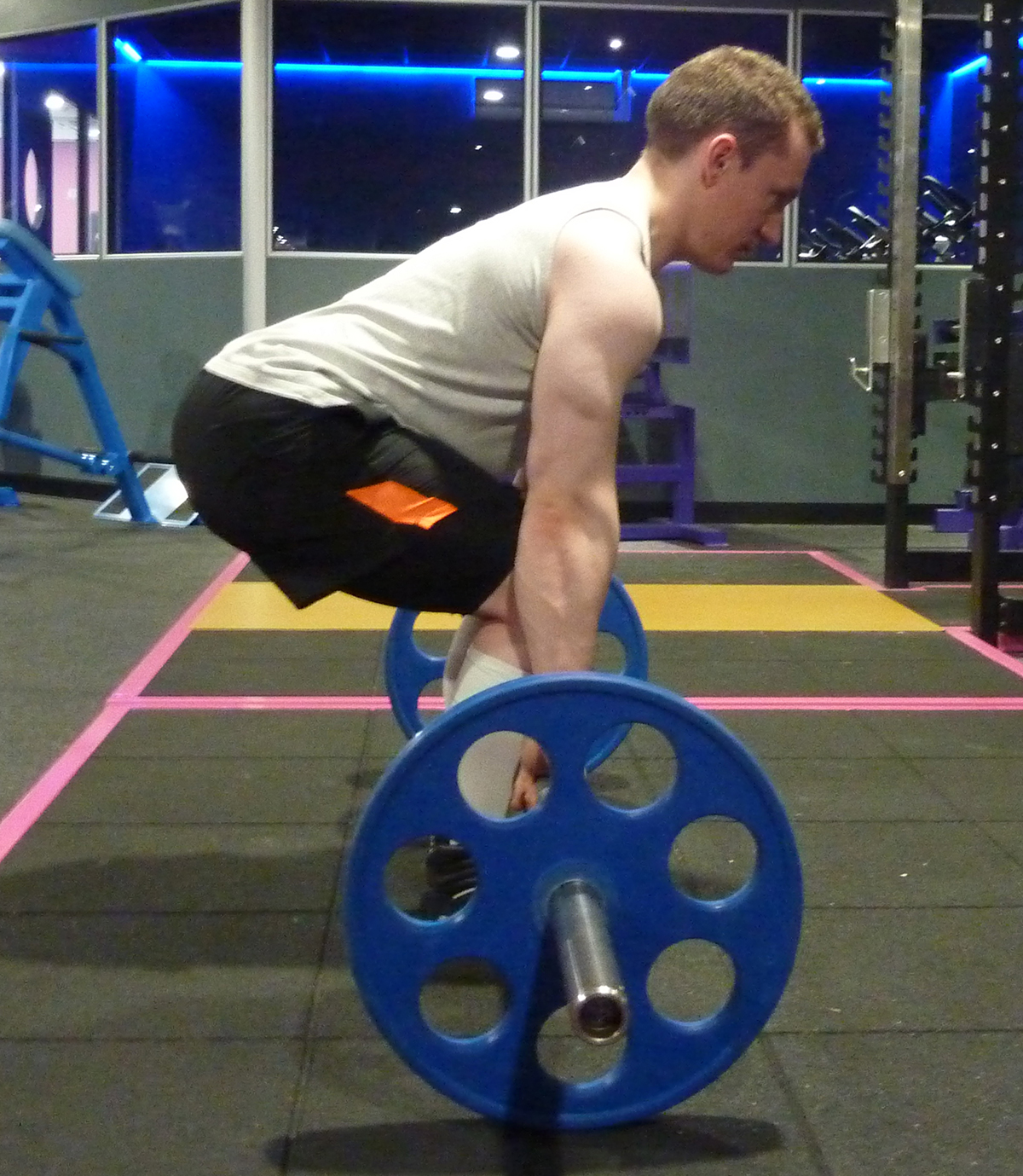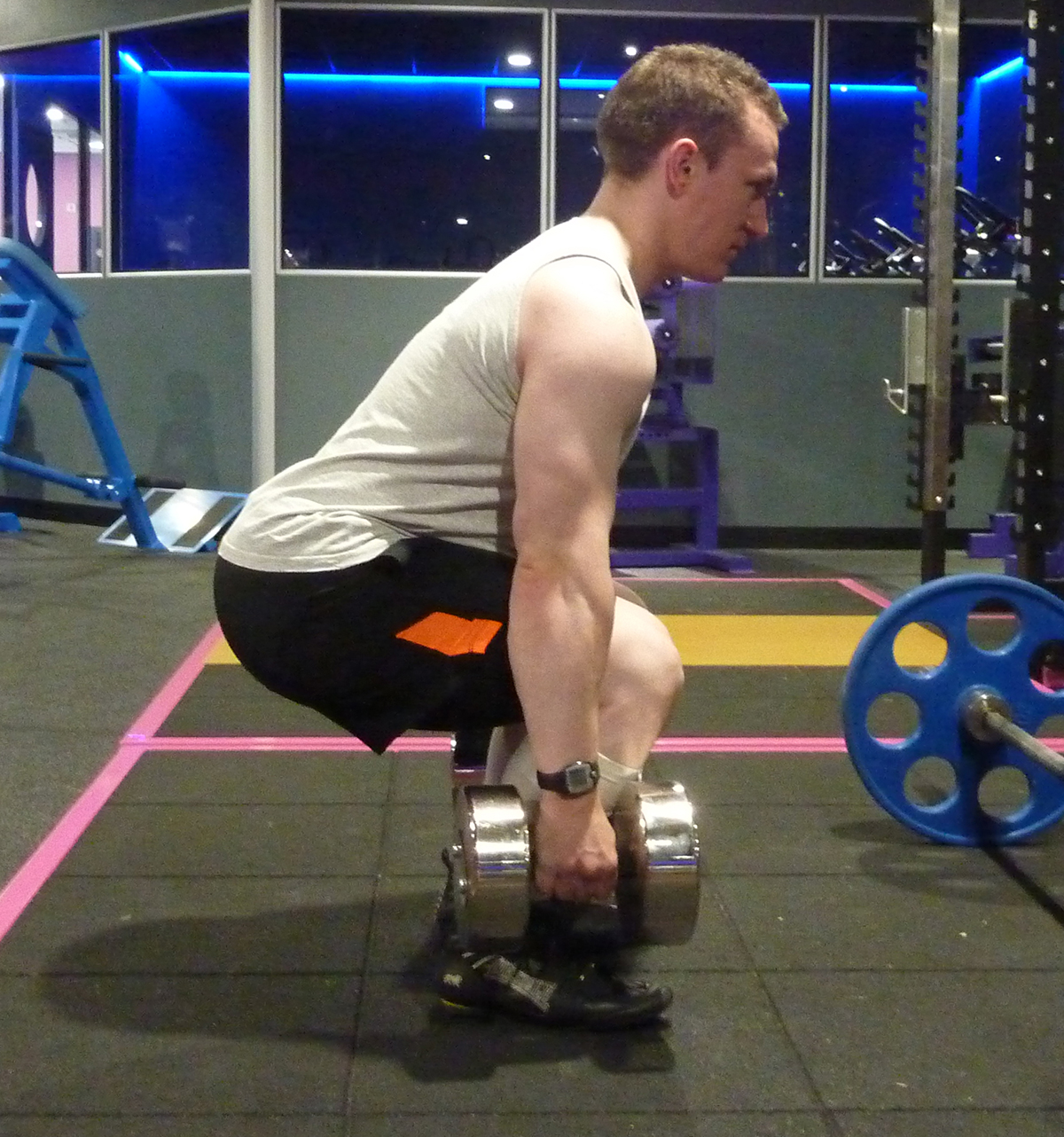Body Proportions and Lifting Talent
Fitness
Some people will always be better at some movements than others, even when training histories are taken into account. Your body’s proportions can predict which movements you will be better at: here’s why.
Let’s look at squat and deadlift mechanics. In both, you must generate hip and knee extension and transmit these forces to the bar. Deadlifting large weights is inefficient because your knees and shins are in the way of the bar. Compare the two photos below:


In the second photo I am holding dumbbells at the same height as the barbell. Notice that my hips are lower and my knees are more flexed. This is a stronger position, and is analogous to the top half of a squat. It is stronger because the relative contributions to overall extension torque are more even between the knee and hip. It doesn’t take much experience in gyms to know that people can half-squat a lot more than they can squat or deadlift. Using a trap-bar for deadlifting – a common practice in training non-strength athletes – changes the setup position to look more like the second photo.
When deadlifting with a barbell your shins must stay closer to vertical and, therefore, your hips must start higher. These two factors shift the majority of demand for extension torque to the hip: for this reason, deadlifting favours a short back relative to height. Conversely, in the squat, a long back and short legs mean the lifter is able to keep a more upright back and minimize its horizontal length. This is only an option when deadlifting if you use a trap-bar.
Interestingly, since taller people tend to have a larger proportion of their height in their legs, this means tall people tend to be good deadlifters (despite the extra distance required) and short people tend to be good squatters. This also makes powerlifting a well-balanced sport, in that being built well for squatting (short limbs, long back) makes you worse at deadlifting. Also, the better-built you are for bench pressing – with a large torso and short arms – the worse you will be at deadlifting. The reverse is true in both cases.
Now, since altering your limb lengths is impractical, this largely determines exercise selection. If you are not training for a barbell sport and you are built poorly for deadlifting (like me), it might be wise to choose an alternative such as Romanian deadlifts with lighter weights or trap-bar deadlifting. The reason for this is that under heavy loads, a person with a long spine will find it hard to stay neutral: the body instinctively tries to reduce the back’s effective length by rounding it. The same goes for squats: it may be more productive to box squat instead, for example.
If you train for powerlifting and want to deadlift the most weight, experiment with sumo and conventional. If you find it hard to keep your spine neutral due to its length, sumo may be a better lift than conventional, simply because it has a more upright (squat-like) start position. However, ultimately you should train both and compete using the more comfortable one.
The final word of advice I have is to play to your strengths. If your proportions favour one lift over the other, you will find it easier to accumulate training volume on that lift. Both squat and deadlift produce large stimuli for whole-body growth, and as long as you do at least some work on the one you are worse at (or something like it) you won’t go far wrong.